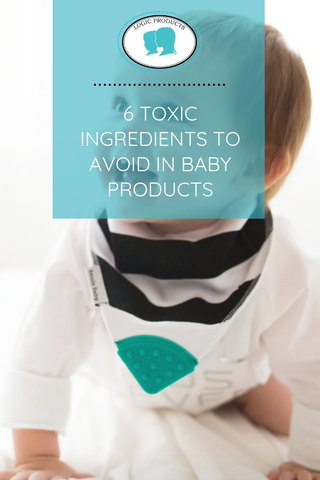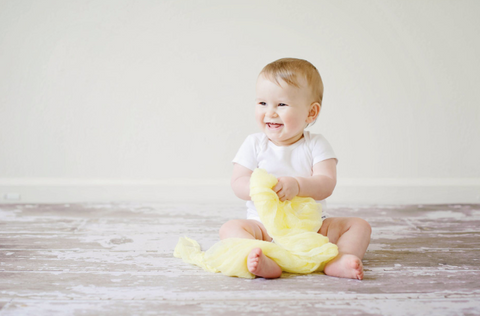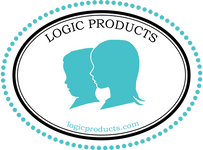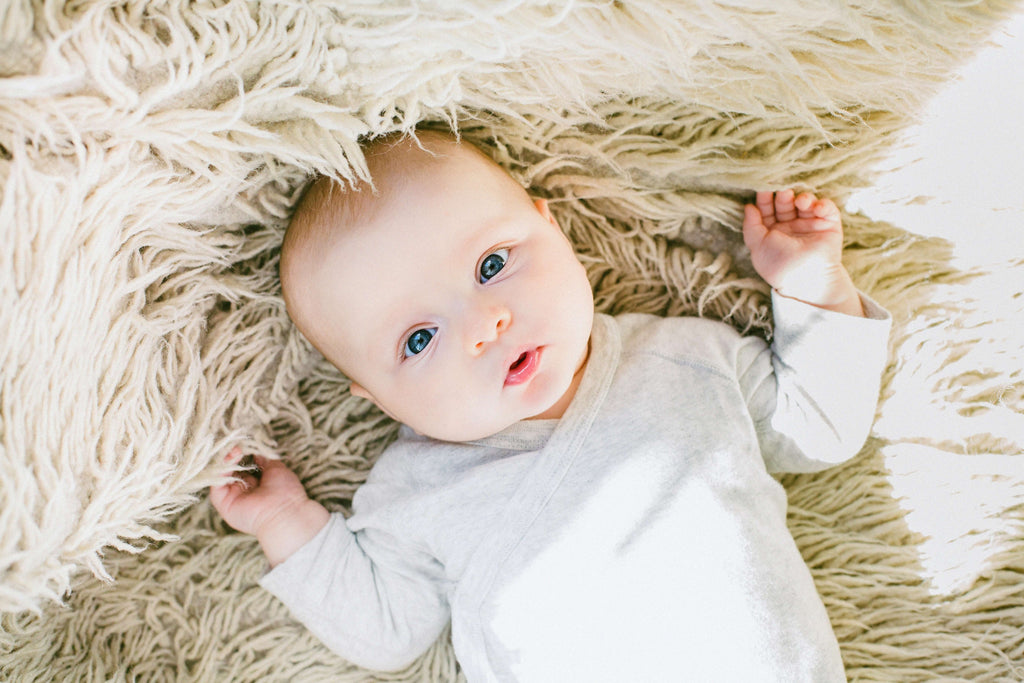Finding products with non-toxic ingredients is important. Here at Logic Products, we want to help busy moms identify easy ways to decipher what is in the products they are purchasing for their children and families. Here are some easy tips to help take some of the guesswork out of deciphering personal and baby care product labels.
1.) Artificial Fragrances
How to easily know if a product has a synthetic scent:
Be wary of any product that uses only the word “fragrance” in their ingredient deck. This is one of the easiest ways for a manufacturer to hide toxic and dangerous ingredients. About 95% of chemicals used in synthetic fragrances are derived from petrochemicals, including benzene derivatives, aldehydes, phthalates, and other toxic chemicals known to be linked to birth defects, nervous system disorders, and allergies. Here is a little know fact: In the U.S. a manufacturer is not required to reveal what is in a “fragrance” and can therefore hide 100’s of toxic chemicals in that one word, citing it as a “trade secret”.

Where are artificial fragrances commonly found?
BABY SHAMPOOS, CONDITIONERS, BUBBLE BATHS, BODY WASHES, HAND SOAPS, SUNSCREENS, BABY WIPES, LOTIONS, MOISTURIZERS, COSMETICS, CLEANING PRODUCTS, LAUNDRY DETERGENTS, MOUTHWASHES, PERFUMES, CANDLES, PLUG IN AIR FRESHENERS, AND ANYTHING WITH A SCENT OR PERFUME. EVEN PRODUCTS THAT ARE “SCENT FREE” CAN HAVE A COCKTAIL OF TOXIC ARTIFICIAL INGREDIENTS USED TO CREATE ITS’ NEUTRAL SCENT.
2.) Mineral Oil
What is the story with baby oil?
Baby oil is made by mixing mineral oil with a fragrance and an emulsifier to blend them together so they do not separate. Mineral Oil is a cheap byproduct of petroleum when it is processed, and it acts like a pore clogging plastic wrap on the skin, which inhibits the skins ability to sweat, breathe, and release toxins and is unsafe.
Instead, look for safe and natural and nourishing oils such as olive, avocado, coconut, and sweet almond oil (Always check for nut allergies before using any nut derived oil)
Where is mineral oil commonly found?
BABY OIL, BATH OILS, SOAPS, LIP BALMS, LIP STICKS, DEODORANTS, TANNING OILS, COSMETICS.
3.) Artificial Dyes & Colorants
How to identify if your product has them?
Artificial colors and dyes are put into personal care products to make them visually more appealing and kid friendly. They are made from synthetic ingredients and are often made of coal tar and may contain heavy metal salts like arsenic and lead that can be absorbed by the skin. They can be toxic and lead to allergies, irritation, skin sensitivity, and are known to block pores and increase the risk of breakouts. They have also been linked to hyperactivity in children, and in animal studies adrenal, thyroid, and kidney tumors. Be on the lookout for chemical colors like Blue 1, Green 3, FD&C Yellow 6, to name a few.
Artificial colors and dyes do not positively affect the performance of a product, and are best avoided. If you want color in your products, look for products colored with natural and safe dyes made from plants and herbs.
Where are artificial dyes and colors commonly found?
BABY SHAMPOO, SHAMPOOS, CONDITIONERS, BUBBLE BATHS, BODY WASHES, HAND SOAPS, COSMETICS, CLEANING PRODUCTS, LAUNDRY DETERGENTS, MOUTHWASHES, BEVERAGES, AND FOODS.

4.) Anything with the word “thiazolinone” in it
The easy way to look for this family of unsafe allergen ingredients:
Isothiazolinones are synthetic biocides used as preservatives that are used for controlling microbial growth in water containing solutions. They are known to be allergens and are cytotoxic (toxic to cells) to humans, and are also toxic to marine environments. There are many variations of this chemical including Benzisothiazolinone, Octylisothiazolinone, Isothiazolinone, Mehtylisothiazolinone, Triethylisothiazolinone, and Biethylisothiazolinone to name a few.
Where are Isothiazolinones commonly found? SHAMPOOS, CONDITIONERS, BABY BUBBLE BATHS, BABY BODY WASHES, HAND SOAPS, HAND SANITIZERS, SUNSCREENS, BABY WIPES, LOTIONS, MOISTURIZERS, COSMETICS, CLEANING PRODUCTS, AND LAUNDRY DETERGENTS.
5.) 1,4 Dioxane and ethylated surfactants
Why are these dangerous and how to recognize them?
Although 1,4 Dioxane is never listed as an ingredient, it is often present in personal care and beauty products. It is a by-product or a contaminant that occurs when “ethylene oxide”, a known carcinogen, is added to other chemicals to make them less harsh. It is believed to be harmful to the nervous system, and a skin and eye irritant.
Look for ingredients that contain the 3 letters eth, from polyethylene, polyethylene glycol, sodium laureth sulfate, ceteareth, oleth, oxynol, -xynol, and PEG which signal the probable presence of 1,4-dioxane.
Where is 1,4 dioxane commonly found?
SHAMPOOS, BUBBLE BATHS, BODY WASHES, HAND SOAPS, CLEANING PRODUCTS, LAUNDRY DETERGENTS.

6.) Phthalates
Why are they unsafe?
Phthalates are a group of chemicals created to soften and increase flexibility in plastics and vinyl. Today they are also used in personal care products to alter viscosity, as gelling agents, emulsifying agents, lubricants, and stabilizers.
Phthalates are considered to be endocrine disruptors, and may effect fertility and obesity, and cause cancer. Additionally, studies by Dr. Philip J. Landrigan of the Mount Sinai Children’s Environmental Health Center, link fetal exposure with autism, ADHD, and neurological disorders.
Where are phthalates commonly found?
SHAMPOOS, CONDITIONERS, KIDS BUBBLE BATHS, BABY BODY WASHES, HAND SOAPS, SUNSCREENS, BABY WIPES, LOTIONS, MOISTURIZERS, COSMETICS, MOUTHWASHES, CHILDREN’S TOYS, DETERGENTS, PAINTS, SHOWER CURTAINS, FLOOR TILES, CLEANING PRODUCTS, WAXES, MODELLING CLAY, VINYL UPHOLSTERY, FOOD CONTAINERS, PERFUMES, NAIL POLISH, AND HAIR SPRAY.
All Logic Products Are Lovingly Crafted and Manufactured In The USA and:
Plant & Mineral Derived
Vegan
Cruelty Free
Phthalate Free
PEG Free
TEA Free
No Synthetic Dyes
No Noxious Fumes
No Methylisothiazolinone
No Benzisothiazolinone
No Petrochemicals
No Synthetic fragrances
No Phosphates
Chlorine Free
Bleach Free
Recyclable Packaging
Made In U.S.A.
Shop our full product line here: https://www.logicproducts.com/


Leave a comment